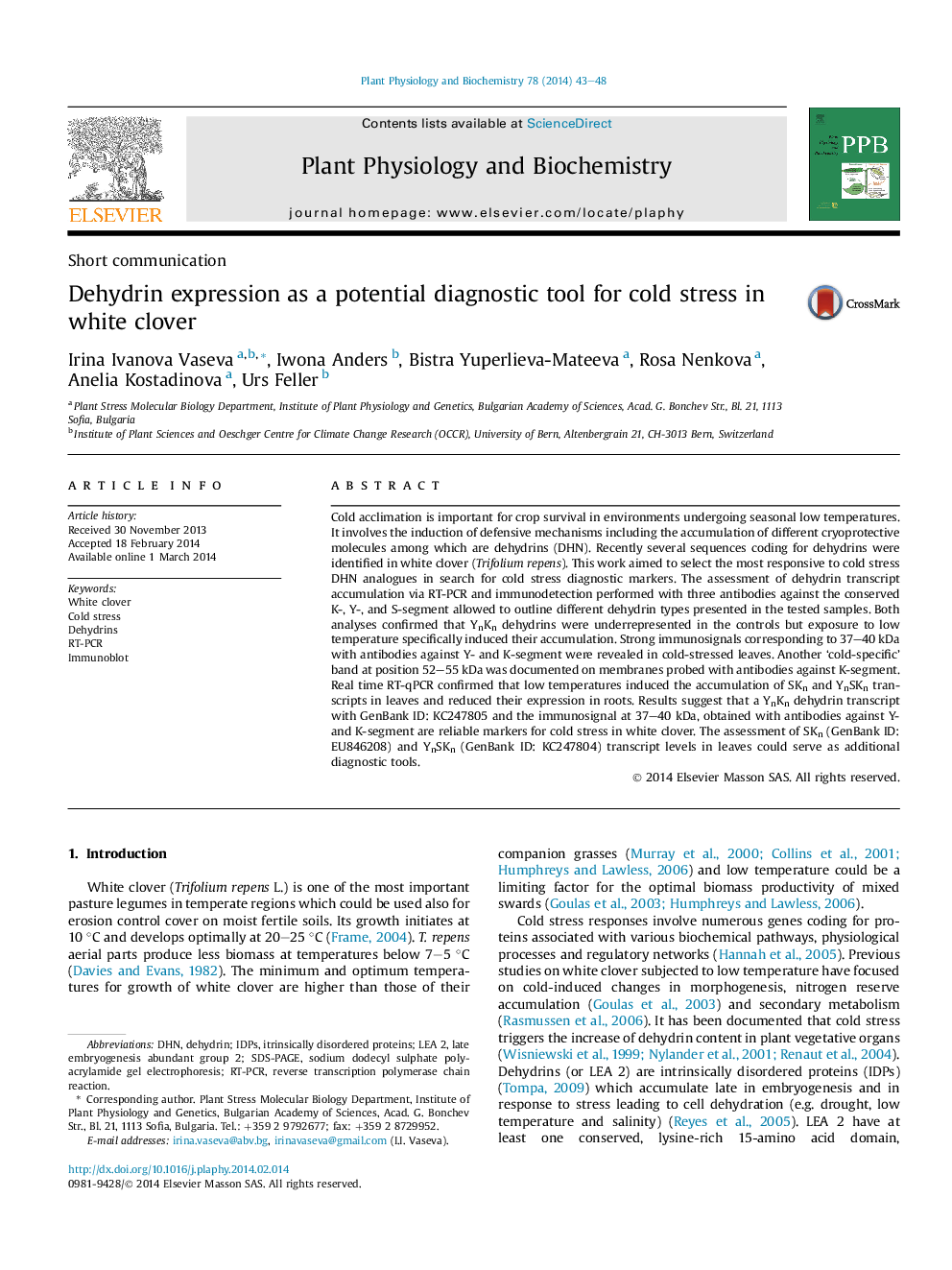| Article ID | Journal | Published Year | Pages | File Type |
|---|---|---|---|---|
| 2016195 | Plant Physiology and Biochemistry | 2014 | 6 Pages |
•Expression of different dehydrin types in cold-stressed clover at early developmental stage was assessed.•YnKn dehydrin transcript KC247805 and immunosignal at 37–40 kDa, are reliable markers for cold stress in white clover.•Dehydrin abundance might be used in marker-assisted selection for early-season cold tolerance in white clover.
Cold acclimation is important for crop survival in environments undergoing seasonal low temperatures. It involves the induction of defensive mechanisms including the accumulation of different cryoprotective molecules among which are dehydrins (DHN). Recently several sequences coding for dehydrins were identified in white clover (Trifolium repens). This work aimed to select the most responsive to cold stress DHN analogues in search for cold stress diagnostic markers. The assessment of dehydrin transcript accumulation via RT-PCR and immunodetection performed with three antibodies against the conserved K-, Y-, and S-segment allowed to outline different dehydrin types presented in the tested samples. Both analyses confirmed that YnKn dehydrins were underrepresented in the controls but exposure to low temperature specifically induced their accumulation. Strong immunosignals corresponding to 37–40 kDa with antibodies against Y- and K-segment were revealed in cold-stressed leaves. Another ‘cold-specific’ band at position 52–55 kDa was documented on membranes probed with antibodies against K-segment. Real time RT-qPCR confirmed that low temperatures induced the accumulation of SKn and YnSKn transcripts in leaves and reduced their expression in roots. Results suggest that a YnKn dehydrin transcript with GenBank ID: KC247805 and the immunosignal at 37–40 kDa, obtained with antibodies against Y- and K-segment are reliable markers for cold stress in white clover. The assessment of SKn (GenBank ID: EU846208) and YnSKn (GenBank ID: KC247804) transcript levels in leaves could serve as additional diagnostic tools.
